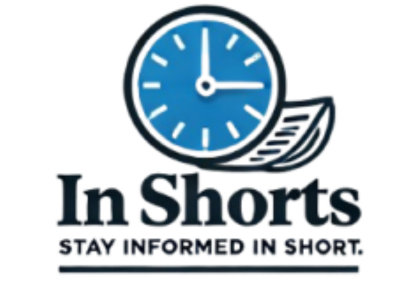In the world of finance, swaps are a common derivative contract used to manage risk, hedge against price fluctuations, or achieve specific financial goals. While many are familiar with basic swaps like interest rate swaps or currency swaps, a less commonly known but equally important type of swap is the Naomi Swap. This financial instrument has been gaining recognition for its innovative structure and utility in certain markets.
What is a Naomi Swap?
At its core, a Naomi Swap refers to a type of financial swap agreement that enables two parties to exchange cash flows associated with different financial instruments. While the term itself may not be as widely recognized as other types of swaps, its functionality is similar to those used in the broader financial markets. Like all swaps, the Naomi Swap involves the exchange of cash flows based on the underlying assets, which can include loans, bonds, or commodities.
The Naomi Swap can be distinguished by its unique approach in certain markets, where it provides a tailored solution for investors and institutions to manage risk, optimize their portfolios, or capitalize on market inefficiencies. As with most swap agreements, it allows participants to gain exposure to different assets or instruments without directly owning them.
How Does a Naomi Swap Work?
The mechanics of a Naomi Swap generally follow the basic principles of other financial swap contracts. Here’s a breakdown of how a typical Naomi Swap might operate:
- Agreement between Parties: Two parties enter into an agreement to swap cash flows derived from different financial instruments. This could involve a swap between cash flows tied to loans, bonds, or commodities.
- Exchange of Cash Flows: The parties agree to exchange payments over a specific time frame. These payments are often based on the performance or returns of the underlying assets. For example, one party may exchange cash flows from a fixed-rate bond, while the other party may provide cash flows tied to a floating interest rate loan.
- Terms of the Swap: The terms of the Naomi Swap, such as the frequency of payments, the period of the swap, and the calculation of the cash flows, are agreed upon at the outset. The swap can be structured to suit the needs of both parties involved, offering flexibility in its design.
- Settlement: At the end of the swap contract, the parties settle the exchange of cash flows. The financial exchange is typically done at a net value, where only the difference between the two sets of cash flows is exchanged, thus reducing the complexity and the capital required for each transaction.
Key Features of the Naomi Swap
- Customizable Structure: One of the primary advantages of a Naomi Swap is its flexibility. Parties can tailor the swap to suit their specific financial needs, making it an attractive option for a variety of markets.
- Risk Management: Like other swaps, a Naomi Swap can be used as a tool for risk management. For instance, investors or institutions can use it to hedge against interest rate changes, currency fluctuations, or commodity price volatility, depending on the underlying assets.
- Efficient Capital Utilization: The Naomi Swap allows participants to gain exposure to a range of financial instruments without directly purchasing them, thus optimizing capital allocation. This can be particularly useful for investors seeking to diversify their portfolios or access markets they might otherwise have difficulty entering.
- Market Innovation: The Naomi Swap is recognized for its innovative approach within certain financial markets, providing a useful tool for parties looking to navigate complex market conditions.
Applications of Naomi Swaps in Financial Markets
Naomi Swaps can be used across various sectors of the financial markets, including:
- Interest Rate Hedging: Institutions or investors seeking to hedge against interest rate fluctuations can use Naomi Swaps to exchange fixed and floating interest rate payments, reducing the impact of rate changes on their portfolios.
- Commodity Trading: Naomi Swaps can also be used in commodity markets, where parties exchange cash flows based on the price of underlying commodities such as oil, natural gas, or agricultural products.
- Corporate Finance: Companies looking to optimize their capital structure or manage debt can use Naomi Swaps to swap cash flows associated with their loans, bonds, or other debt instruments. This can help reduce borrowing costs or balance the risk between different types of debt.
- Emerging Markets: In some cases, Naomi Swaps are used in emerging markets, where they can offer a way for investors to manage currency or political risk, or for institutions to gain access to markets with limited direct exposure.
Benefits of Naomi Swaps
- Flexibility and Customization: Naomi Swaps provide a high degree of flexibility, allowing investors to structure their swaps to fit their exact needs, whether for risk management, speculation, or capital efficiency.
- Diversification: For institutional investors, Naomi Swaps offer a means of diversifying their portfolios by gaining exposure to different financial instruments without directly purchasing them.
- Risk Mitigation: Naomi Swaps can be an effective tool for managing and reducing financial risk, especially when dealing with volatile market conditions.
- Capital Efficiency: By enabling the exchange of cash flows rather than the outright purchase or sale of assets, Naomi Swaps can reduce the capital required for certain transactions.
Challenges and Risks of Naomi Swaps
While Naomi Swaps offer several advantages, they are not without their risks. Some potential challenges include:
- Complexity: Naomi Swaps can be complex financial instruments, and understanding the underlying assets and market conditions is crucial to using them effectively. Both parties need to be aware of the terms and risks associated with the swap.
- Counterparty Risk: As with all derivative contracts, there is the risk that one party may fail to fulfill its obligations under the swap agreement. This counterparty risk can be mitigated through collateral agreements or by working with trusted financial institutions.
- Market Risk: The performance of a Naomi Swap depends on the underlying assets, and market conditions can affect the value and performance of the cash flows being exchanged. Participants need to be aware of the risks inherent in the assets involved.
Conclusion
The Naomi Swap is a unique and innovative financial instrument that serves as a valuable tool for risk management, capital optimization, and portfolio diversification. While the concept may not be widely known, its utility in certain markets is significant, particularly for investors and institutions looking to manage exposure to various financial instruments, such as loans, bonds, and commodities. By allowing parties to exchange cash flows based on underlying assets, the Naomi Swap offers flexibility and efficiency in navigating complex financial markets. However, as with all derivative contracts, it’s essential for participants to understand the risks and complexities involved before entering into such agreements.

